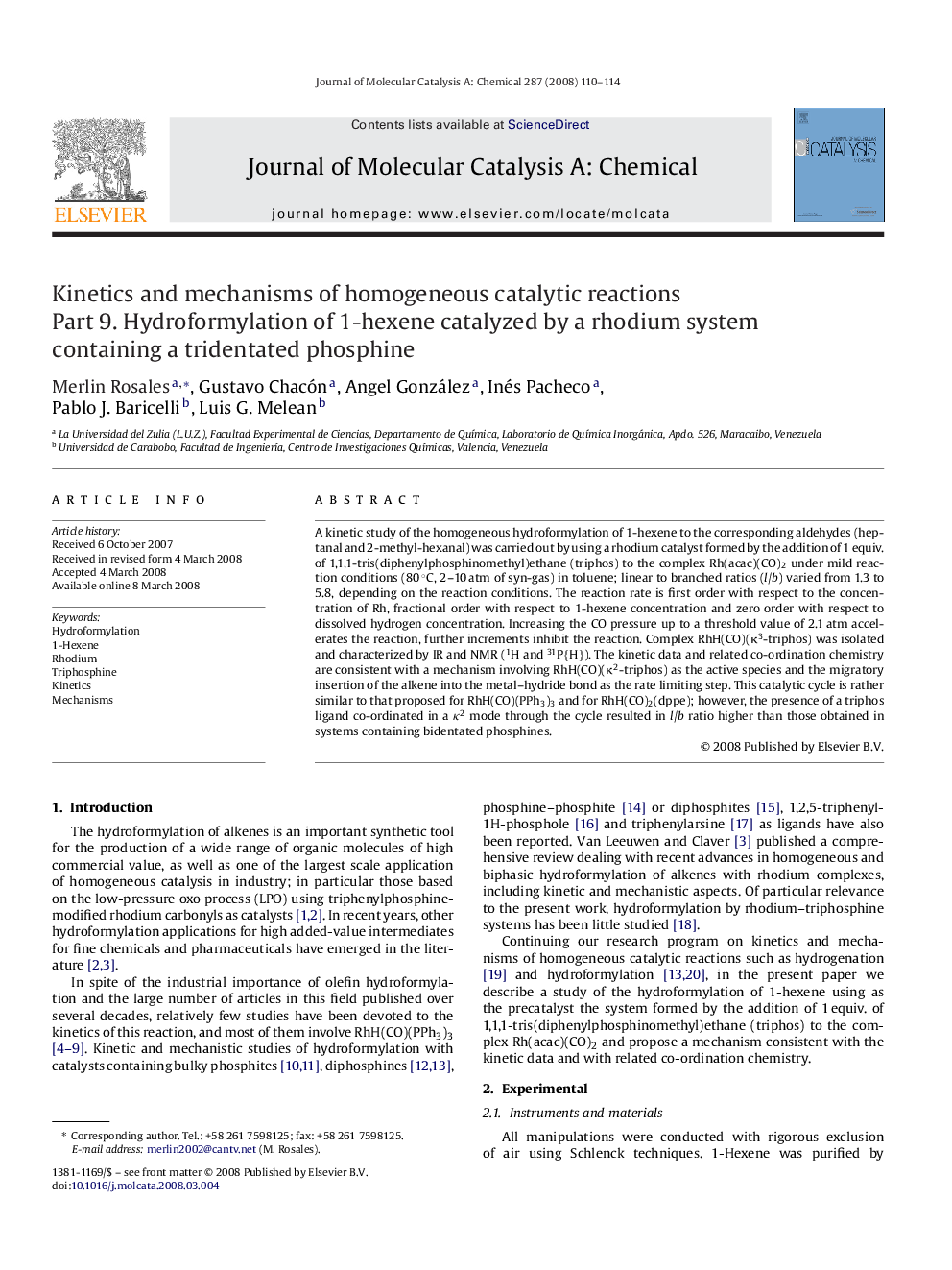| کد مقاله | کد نشریه | سال انتشار | مقاله انگلیسی | نسخه تمام متن |
|---|---|---|---|---|
| 67351 | 48478 | 2008 | 5 صفحه PDF | دانلود رایگان |

A kinetic study of the homogeneous hydroformylation of 1-hexene to the corresponding aldehydes (heptanal and 2-methyl-hexanal) was carried out by using a rhodium catalyst formed by the addition of 1 equiv. of 1,1,1-tris(diphenylphosphinomethyl)ethane (triphos) to the complex Rh(acac)(CO)2 under mild reaction conditions (80 °C, 2–10 atm of syn-gas) in toluene; linear to branched ratios (l/b) varied from 1.3 to 5.8, depending on the reaction conditions. The reaction rate is first order with respect to the concentration of Rh, fractional order with respect to 1-hexene concentration and zero order with respect to dissolved hydrogen concentration. Increasing the CO pressure up to a threshold value of 2.1 atm accelerates the reaction, further increments inhibit the reaction. Complex RhH(CO)(κ3-triphos) was isolated and characterized by IR and NMR (1H and 31P{H}). The kinetic data and related co-ordination chemistry are consistent with a mechanism involving RhH(CO)(κ2-triphos) as the active species and the migratory insertion of the alkene into the metal–hydride bond as the rate limiting step. This catalytic cycle is rather similar to that proposed for RhH(CO)(PPh3)3 and for RhH(CO)2(dppe); however, the presence of a triphos ligand co-ordinated in a κ2 mode through the cycle resulted in l/b ratio higher than those obtained in systems containing bidentated phosphines.
The system Rh(acac)(CO)2/triphos is an efficient precatalyst for the homogeneous hydroformylation of 1-hexene under mild reaction conditions; the linear to branched ratio (l/b) of aldehydes formed varied between 1.3 and 5.8 and it is dependent on the reaction conditions. Kinetic and mechanistic studies allowed us to propose a catalytic cycle, in which RhH(CO)(κ3-triphos) is the resting state of the catalyst and the insertion of the alkene into the metal–hydride bond is the rate-determining step.Figure optionsDownload as PowerPoint slide
Journal: Journal of Molecular Catalysis A: Chemical - Volume 287, Issues 1–2, 15 May 2008, Pages 110–114